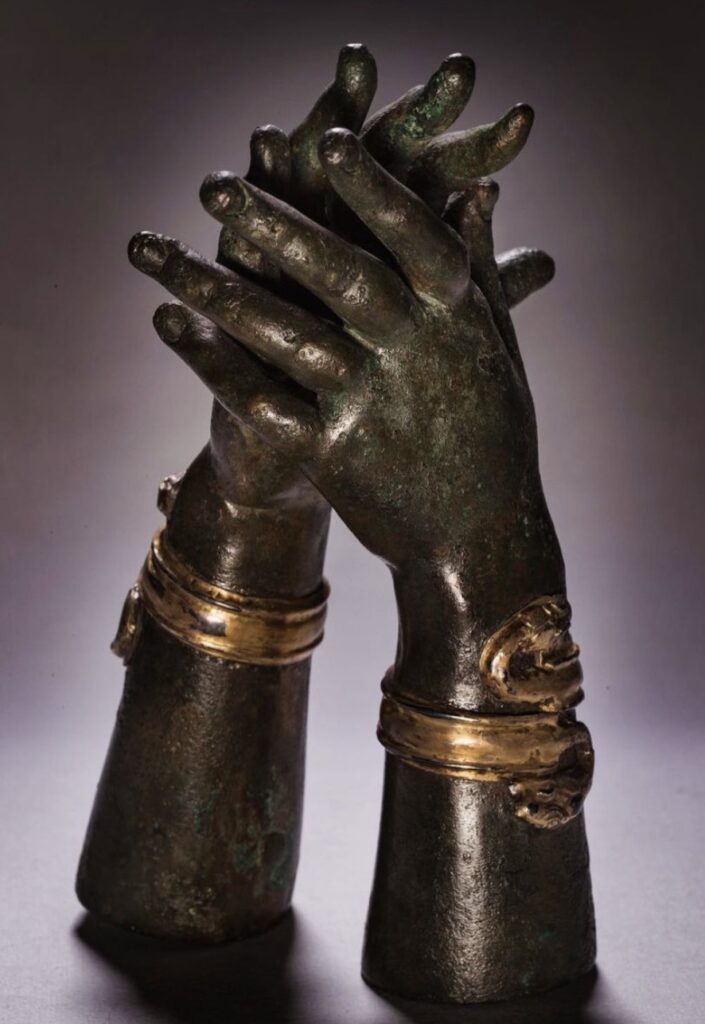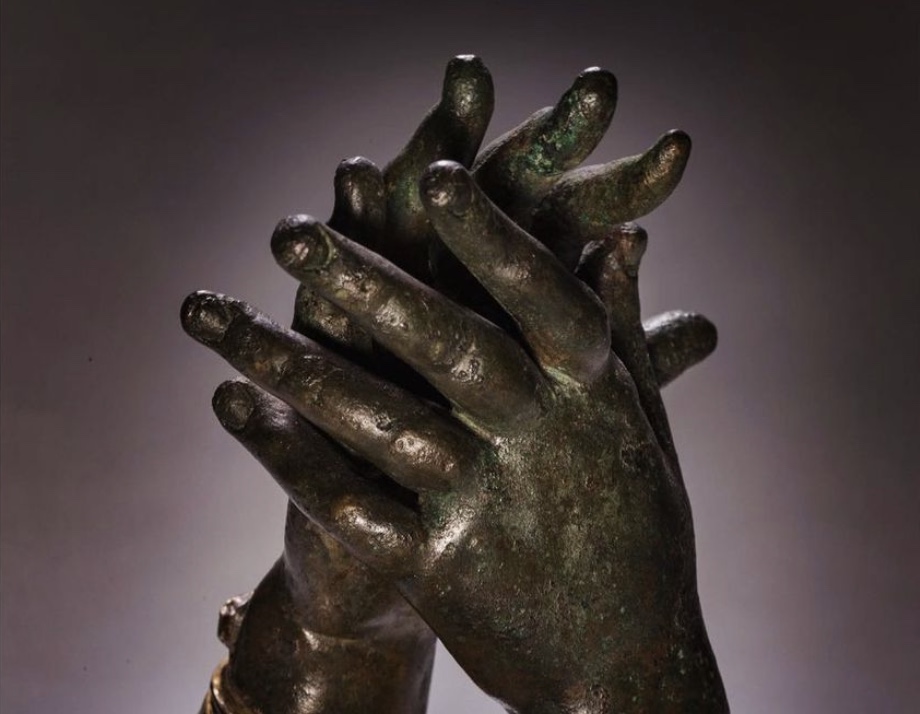With deftly modelled fingertips and slightly dimpled flesh, these nearly clasping female hands in Taranto exude an undeniable sensuality. These are not the chapped and nicked hands of a washerwoman (or former toiling archaeologist…sigh), but rather those of the moneyed leisured class, which the pair of gilt coiled-snake bracelets make abundantly clear.
But they are not idle appendages! Nor are they anywhere close to life sized (less than half that, actually). In fact, they are joined by an ingenious hinge so that with truncated forearms acting as a lever, the hands were transformed into the business end of a seriously fancy nutcracker. Whimsical and unlikely (perhaps delightfully so), isn’t it?

They were discovered in a tomb within a late 4th century B.C. necropolis at the periphery of the ancient city. An abundance of exceptionally fine jewelry was found in the necropolis as well, testament to the city’s wealth and Apulia’s important metal-working tradition. But truth be told, while I don’t doubt that these glorious hands were a utensil of some kind (perhaps even for elaborate dining) I’m not certain what evidence there is for cracking of nuts per se…. Were nuts considered deserving of such treatment in the ancient world? Might the hands have played a cultic function, smashing something less prosaic?
Regardless of their enigmatic function, the ingenuity and craftsmanship is something to behold, and they are the star of the beautifully installed Museo Archeologico Nazionale di Taranto. Visit if you can, and be sure to circle around the schiaccianoci di Taranto – a marvel from every angle!




